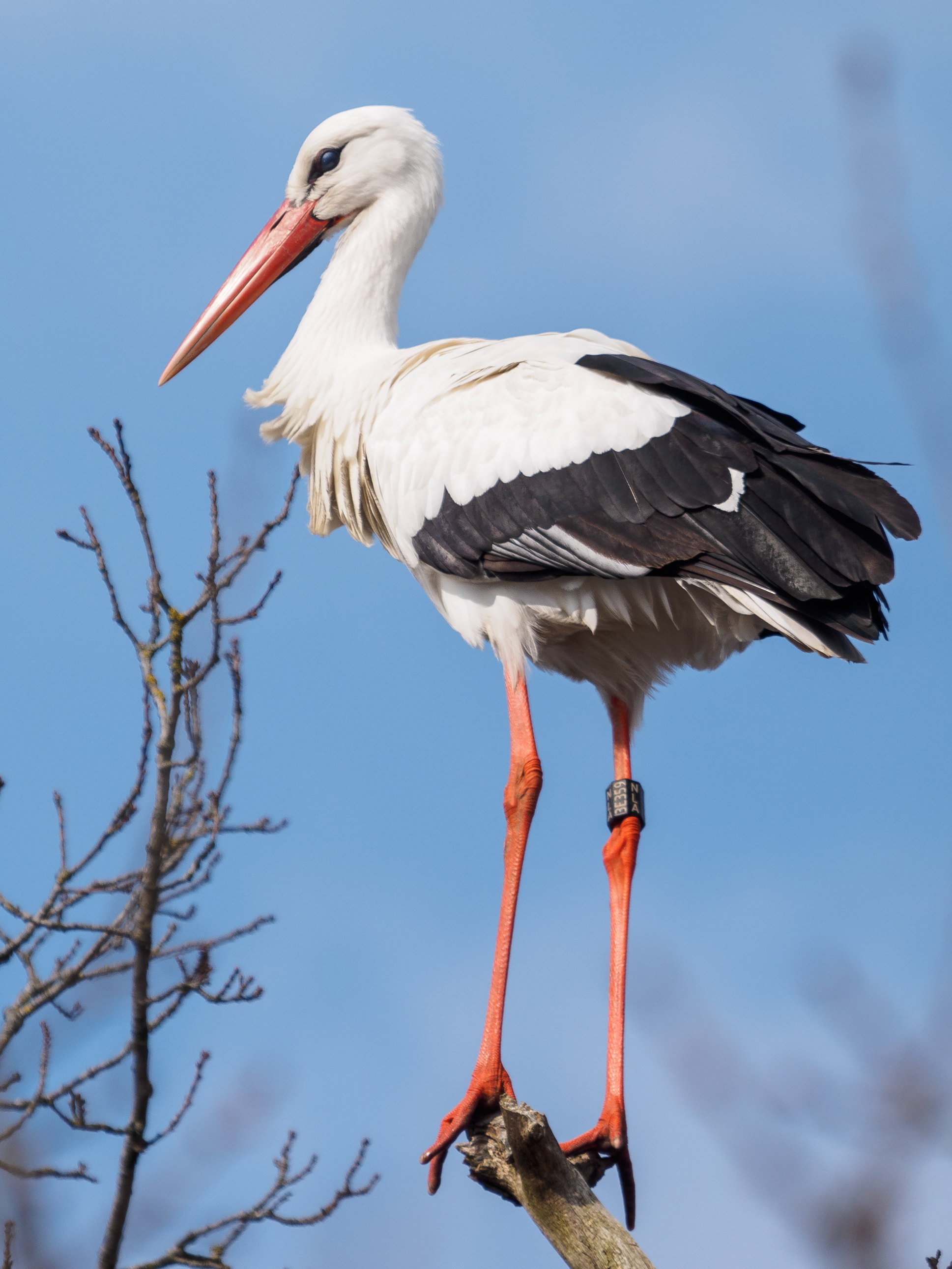White Stork (common name)
Ciconia ciconia (scientific name)
Designation
Unofficial
Classification
- Kingdom: Animalia
- Phylum: Chordata
- Class: Aves
- Order: Ciconiiformes
- Family: Ciconiidae
- Genus: Ciconia
- Species: C. ciconia
The Bird
The white stork is a large wading bird that breeds in the warmer parts of Europe, northwest Africa, and southwest Asia. The species generally reaches 100–115 centimeters (39–45 in) and weighs up to 2.3–4.5 kilograms (5–10 lb) with a majestic wingspan of 155–200 centimeters (61–79 in). The bird is completely white except for highly contrasting, black wing feathers, a red bill, and reddish-orange legs. On the ground, the stork has a slow, steady gait, and in the air it flies with its long neck outstretched. Storks migrate to Africa and India, where they prefer open wetlands, grassy meadows, and farmlands void of thick vegetation where it is easy to feed on insects, worms, reptiles, frogs, and rodents.
Interestingly, white storks rarely create a sound, which is due to an underdeveloped vocal organ. They rely on visual contact with their flock, given that they tend to live in an open habitat and can easily see each other because of their large size and distinct coloration. They build large stick nests in trees or on top of buildings. Females lay up to four eggs, and both parents participate in the incubation process.
The Significance
Storks are held in high esteem in many Central and Eastern European cultures and are regarded as national symbols in Belarus, Germany, Lithuania, and Poland. The white stork is highly admired by the Belarusian people and appears on both Belarusian currency and stamps. Because the impressive birds often arrive in spring after their winter migration, they are associated with new life, Easter, and good luck. Storks are a symbol of fertility, and according to popular myth, they are depicted as delivering babies to their new parents. The birds are often seen nesting close to humans, and it is not uncommon to find storks constructing their homes in urban areas such as buildings or churches.
Article written for World Trade Press by WTP Staff.
Copyright © 1993-2024 World Trade Press. All rights reserved.



